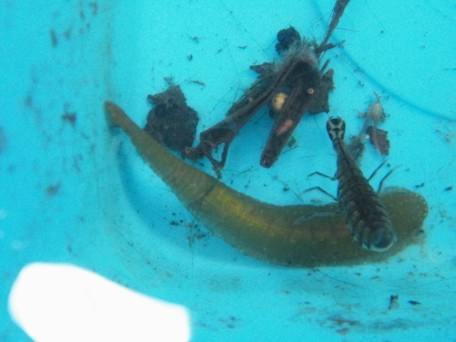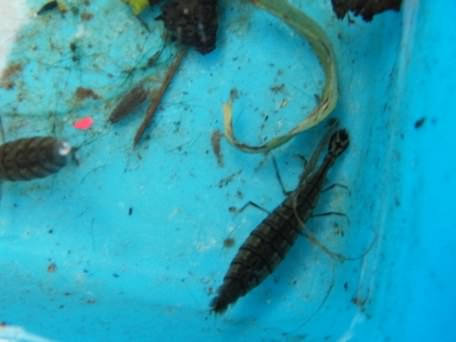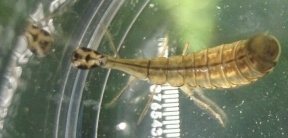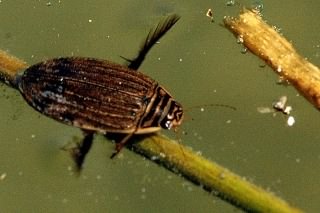
Larvae and Duck Leech

Larvae

Larvae
Photo ©2011 Ina96

Female
Photo ©2005 James Lindsey

Male
Photo ©2004 Udo Schmidt
Click any photo for a larger image
Lesser Diving beetle - Acilius sulcatus
Family - Dytiscidae
A predatory diving water beetle that feeds on feeds upon small invertebrates such as Daphnia, Mosquito larvae and other small vertebrate species, it has an almost worldwide distribution but primarily in North Western Europe and the UK. Larvae are typically a light brown with yellow markings and a black stripe along the back, it can be variable in colour across its range. Adults grow to around 14–18mm (0.55–0.7in) long, females have ridged wing cases whilst in the male they are smooth. Both are brown and minutely speckled with yellow with a yellow pronotum with two black bands. It inhabits bogs, ponds, slow streams, and other water bodies. It can be found throughout the year. It is capable of flight so can readily colonise other water bodies and can become dominant where there are no fish to predate it where it can be used as a primary indicator of predator presence and an aid in the measurement of the ecological health of wetlands.
A univoltine species, adult individuals can overwinter in deep water, however mating occurs in both spring and autumn. Hatching after around 7–8 days eggs are deposited close to water on the underside of plants, the larval stage takes around a month, pupating after a further 15–30 days. A strong swimmer the larvae actively pursues it's prey capturing it headfirst and then injecting digestive enzymes for consumption. Adults devour their prey without this external digestion process. Distinctive hind legs which are long and fringed with setae in the adult give it a limited walking capability on land.
 Larvae and Duck Leech |
 Larvae |
 Larvae Photo ©2011 Ina96 |
 Female Photo ©2005 James Lindsey |
 Male Photo ©2004 Udo Schmidt |
Two upper left photos ©2018– Click any photo for a larger image |
Site design ©1999– Brickfields Country Park - Privacy -